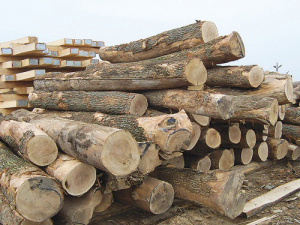Damien O’Connor: NZ united on global trade
When it comes to international trade, politicians from all sides of the aisle are united, says Labour's trade spokesman Damien O'Connor.
 The Government will contribute $10.2 million from the Sustainable Food and Fibre Futures fund to back technical innovation in the forestry industry.
The Government will contribute $10.2 million from the Sustainable Food and Fibre Futures fund to back technical innovation in the forestry industry.
An innovative high-tech approach to forestry management could transform New Zealand’s forestry industry, Forestry Minister Stuart Nash and Agriculture Minister Damien O’Connor announced today.
The Government is backing Precision Silviculture, a $25.5 million, seven-year programme led by Forest Growers Research Limited (FGR). The Government will contribute $10.2 million from the Ministry for Primary Industries’ Sustainable Food and Fibre Futures fund (SFF Futures).
The programme involves four workstreams.
The first workstream, Nursery, is focused on reducing seedling costs to the forest owner, including nursery labour costs and non-labour costs such as seed and fertiliser.
The second workstream, Planting, focuses on reducing the cost of planting by moving from manual planting to multiple mechanical planting and preparation operations.
Workstream three, Pruning, is focused on reducing the costs of pruning by moving from manual pruning to mechanical pruning equipment.
The fourth workstream, Thinning, is designed to reduce reliance on manual labour for forest operations and create a safer work environment.
Forestry Minister Stuart Nash says the investment is part of the Government’s wider plan to provide economic security to workers and businesses, with higher skilled and high-wage jobs that support a low-emissions economy.
“Silviculture is about controlling the composition, structure, growth and quality of a forest. It is essential to manage and create value from our plantation forests however it has remained a highly manual and labour-intensive work practice.
“The programme will focus on developing mechanisation, automation, digital technology and robotics in the silviculture value chain. This will have a major impact on the key silvicultural areas of planting, pruning and thinning, as well as in-nursery activities,” Nash says.
“The innovative use of technology offers multiple benefits for the forestry sector. It will make silviculture work safer, more productive and more attractive to workers. The programme includes re-training workers to match the transition into high-tech jobs.
“It will also enable the forestry workforce to create higher-value products more efficiently.
“Advancements in mechanisation and precision automation will make the recovery of forest waste more financially viable. This will unlock potential to use biomass waste in new manufacturing chains. This could include biofuels and biodegradable alternatives to plastic products, such as disposable cups and packaging.”
Agriculture Minister Damien O’Connor says the timing is right for the programme.
“A large number of forests planted in the 1990s are due for harvesting in the mid-2020s, so it’s an ideal time for this overhaul,” O’Connor says.
“It’s estimated that in total the programme has the potential to deliver $530 million of value to the plantation forestry sector and $190 million worth of innovative technology sales between now and 2035. Other benefits will be an improved pruned log supply for domestic wood processors, and use of the technology in indigenous forest establishment.
“This SFF Futures investment will enable the forestry industry to evolve at a pace that wouldn’t otherwise be possible. The programme fits with our Fit for a Better World roadmap for the food and fibre sector, which aims to boost sustainability, productivity and jobs over 10 years. The roadmap will help drive our economic recovery from Covid-19.
“We look forward to working with FGR to build a sustainable, profitable and internationally competitive forestry sector that delivers higher economic returns for New Zealand.”
Canterbury farmer Michelle Pye has been elected to Fonterra’s board for a three-year term.
Farmers are welcoming the announcement of two new bills to replace the under-fire Resource Management Act.
The Government has announced it will immediately roll over all resource consents for two years, with legislation expected to pass under urgency as early as this week.
The New Zealand National Fieldays Society has achieved a major sustainability milestone - reducing its greenhouse gas emissions and reaching the target five years early.
Fonterra's 2025/26 financial year is off to a strong start, with a first quarter group profit after tax of $278 million- up $15m on the previous year.
Government plans to get rid of regional councillors shows a lack of understanding of the fundamental problem affecting all of local government - poor governance.

OPINION: Your old mate welcomes the proposed changes to local government but notes it drew responses that ranged from the reasonable…
OPINION: A press release from the oxygen thieves running the hot air symposium on climate change, known as COP30, grabbed your…